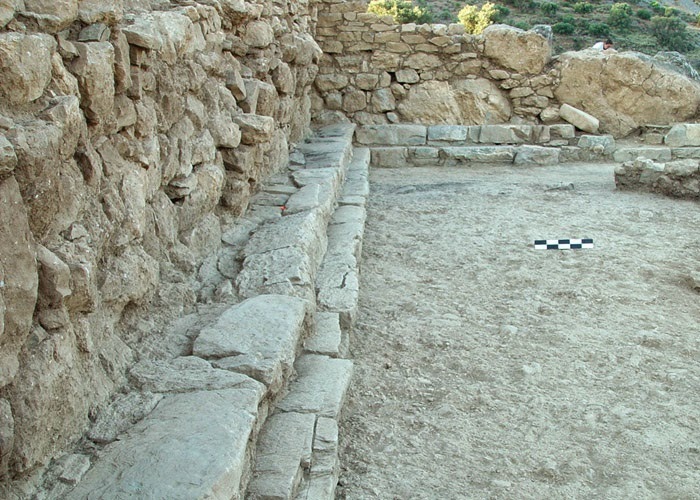Archaeologists and students from North Carolina and across the US, as well as local Cretan workers, are studying the findings of Azoria, a city destroyed by fire about 2,500 years ago. The Azoria Project is the excavation of an Early Iron Age and Archaic site (ca. 1200-500 B.C.) on the island of Crete in the Greek Aegean. The project is spearheaded by Donald Haggis, an archaeology professor at the University of North Carolina-Chapel Hill. Haggis and his team have been working on the project since 2002. Greek officials monitor the excavation as all antiquities found must remain in Greece.
The Archaeology News Network reports that the team is currently working on gathering historical clues from the remnants of buildings, personal items, implements and food. In the past, the Azoria Project excavations have recovered evidence of an Archaic Greek city, established c. 600 BC, following a long period of continuous occupation throughout the Early Iron Age or Greek Dark Age (1200-700 BC) and Early Archaic (700-600 BC) (or Orientalizing) periods. The city was destroyed by fire early in the 5th century BC, to be subsequently reoccupied on a limited scale c. 200 BC—probably a single tower constructed on the peak of the South Acropolis.
Although the site has a long history of use, the most visible remains are the houses and communal buildings of Archaic date (600-500 BC). The Archaic rebuilding expanded the settlement to its maximum size (c. 15 hectares), created a zone of communal buildings—discovered have been a communal dining building, a monumental civic building, and an Archaic shrine.
The Azoria project excavations took place between 2002 and 2006 and there was a hiatus from 2007 until 2012, when conservation work was done. Excavations resumed last year and they are scheduled to continue through 2017, followed by additional years of study.
Fieldwork is conducted by permission of the Greek Ministry of Culture under the auspices of the American School of Classical Studies at Athens and the Archaeological Service of Eastern Crete (24th Ephorate of Prehistoric and Classical Antiquities). The main supporting institutions are the Department of Classics at the University of North Carolina at Chapel Hill, the Classical Studies Program at Iowa State University, the Curriculum in Archaeology and the Research Laboratories of Archaeology at UNC, the Institute for Aegean Prehistory Study Center for East Crete (INSTAP-SCEC), and the Duke-UNC Consortium for Classical and Mediterranean Archaeology (CCMA).
 |
| Monumental Civic Building excavated at Azoria in 2006 [Credit: Azoria Project/ University of North Carolina at Chapel Hill] |
Although the site has a long history of use, the most visible remains are the houses and communal buildings of Archaic date (600-500 BC). The Archaic rebuilding expanded the settlement to its maximum size (c. 15 hectares), created a zone of communal buildings—discovered have been a communal dining building, a monumental civic building, and an Archaic shrine.
The Azoria project excavations took place between 2002 and 2006 and there was a hiatus from 2007 until 2012, when conservation work was done. Excavations resumed last year and they are scheduled to continue through 2017, followed by additional years of study.
Fieldwork is conducted by permission of the Greek Ministry of Culture under the auspices of the American School of Classical Studies at Athens and the Archaeological Service of Eastern Crete (24th Ephorate of Prehistoric and Classical Antiquities). The main supporting institutions are the Department of Classics at the University of North Carolina at Chapel Hill, the Classical Studies Program at Iowa State University, the Curriculum in Archaeology and the Research Laboratories of Archaeology at UNC, the Institute for Aegean Prehistory Study Center for East Crete (INSTAP-SCEC), and the Duke-UNC Consortium for Classical and Mediterranean Archaeology (CCMA).

No comments:
Post a Comment